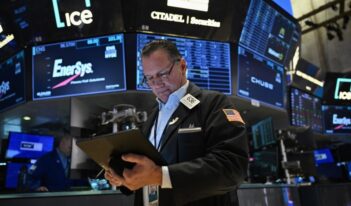
ERISA fiduciaries may now consider ESG in investment decision making.
“A million dollars isn’t cool. You know what’s cool?”
Twelve trillion dollars.
That is the amount of money that the U.S. Department of Labor estimates is held in pension plans regulated under the Employee Income Security Act of 1974 (ERISA). According to the Labor Department, ERISA governed nearly 734,000 retirement plans in 2021.
All investments made using ERISA-regulated plans’ assets must comply with minimum standards. ERISA plans are administered by fiduciaries—regulated representatives that make investment decisions and manage assets in these retirement funds—who must act in accordance with certain legal and ethical duties.
The Labor Department has now issued a final rule that will permit plan fiduciaries to consider environmental, social, and governance (ESG) factors more readily in investment decisions. The updated rule will take effect on January 30, 2023.
Under ERISA, fiduciaries are bound by a duty of loyalty, meaning they must act for the exclusive benefit of plan participants and beneficiaries. Plan fiduciaries are also bound by a duty of prudence, meaning that, in any given situation, they must act as a prudent person would in similar circumstances. The duties of loyalty and prudence require ERISA fiduciaries to center risk-return analysis in their decision making.
A previous Labor Department rule—published at the end of the Trump Administration’s term—limited ERISA fiduciaries to making investment decisions based “solely on pecuniary factors,” with two limited exceptions. The rule defined pecuniary factors as those that a fiduciary “prudently determines will have a material effect” on risk-return analysis for the economic value of an investment. Moreover, it instructed that fiduciaries were not permitted to subordinate the interest of investment returns to ESG objectives or take on additional risk to further “non-pecuniary objectives.”
Although the former rule did not bar fiduciaries from considering of ESG factors in decision making, experts largely viewed it as unfriendly to these factors.
Neither did the former rule’s exceptions leave much room for ESG considerations. The first exception permitted fiduciaries to consider non-financial factors as a tie-breaker—but only if investment alternatives were indistinguishable based on pecuniary factors alone. The Labor Department noted that this circumstance should be rare.
The second exception allowed fiduciaries to consider non-pecuniary factors for designated investment alternatives in participant-directed individual account plans—and only if the fund is not used as a qualified default investment alternative (QDIA). Again, the Labor Department emphasized the limited nature of this exception.
Soon after President Joseph R. Biden took office, however, the Labor Department announced it would review its previous rule for amendment and, in any event, would not enforce it. The Labor Department explained that it received feedback from stakeholders expressing particular concern about the prior rule’s dismissal of “substantial evidence” showing that the use of ESG analysis could improve investment value and long-term returns. In addition, the Labor Department noted that its previous rule had a chilling effect on considering even financially relevant ESG factors when selecting investments.
The Labor Department’s revised rule maintains that ERISA’s duties of loyalty and prudence necessitate that fiduciaries do not subordinate investment returns for collateral benefits, with several key changes.
The rule now specifically allows—but does not require—fiduciaries to consider “the economic effects of climate change” and other ESG factors when making investment decisions, so long as the considerations remain rooted in the typical risk-return analysis a fiduciary would complete. The new rule clarifies that fiduciaries must weigh any factor considered using a value that “appropriately reflects an assessment of its impact on risk and return”—a measure intended to prevent deemphasis of investment objectives.
The new rule also changes the exceptions under the previous rule. First, with respect to the tie-breaker exception, the final rule broadens the definition of a tie between investment alternatives. The new rule encompasses circumstances in which a fiduciary prudently concludes that competing investments serve the overall financial interests of a plan equally well. In that case, a fiduciary may select one investment over another based on collateral benefits.
Second, the new rule eliminates the former disparate treatment of QDIAs, allowing fiduciaries to consider ESG factors there as elsewhere
Finally, the new rule considers that certain shareholder rights accompany investments in company stock. It also changes previous guidelines for proxy voting, now emphasizing fiduciaries’ responsibility to manage proxy votes attendant to investments.
The new rule does not go as far as one initially proposed by the Biden Administration, which would have created a presumption that ERISA fiduciaries should consider ESG factors. Nor does it elevate ESG factors to equal footing with traditional factors. Nevertheless, the new rule brings ERISA into closer alignment with the Biden Administration’s goal of allowing workers to use their retirement investments to promote public health, protect the environment, and address the climate crisis.



